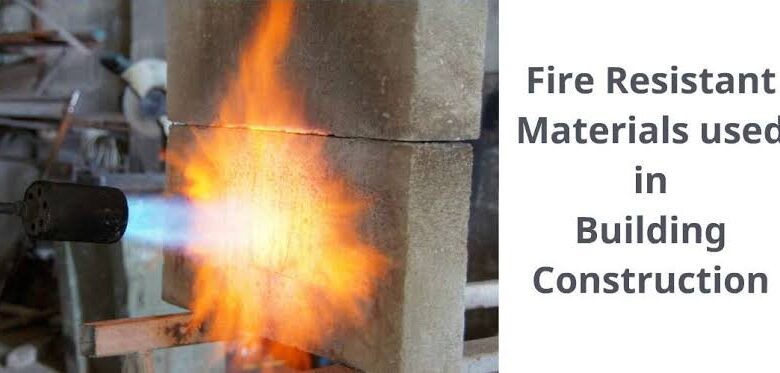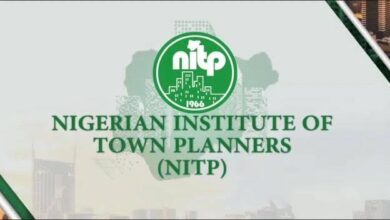Reimagining Nigeria’s Urban Resilience: Why fire resistance must be cornerstone of commercial construction

By: Lanre Hassan.
Lanre Hassan is a real estate and risk management professional with over 10 years of experience spanning property valuation, investment advisory, and insurance risk assessment. He has successfully managed residential, commercial, and industrial portfolios, closed high-impact real estate transactions, and conducted over 250 risk inspections and 200+ insurance claim investigations.
He holds a M.Sc. in Commercial Real Estate from Georgia State University and is a registered estate surveyor and valuer (RSV), as well as an associate of The Nigerian Institution of Estate Surveyors & Valuers (ANIVS) and the Chartered Insurance Institute of Nigeria (CIIN). A member of Institute of Loss Adjusters of Nigeria (ILAN) and Risk Surveyors Association of Nigeria (RISAN). Lanre is known for delivering strategic, data-driven solutions that enhance asset performance and reduce exposure to risk.
On the 1st of December 2024, residents of the Kankan Area in Ede, Osun State, were greeted by the astonishing sight of a home on fire, its roof section engulfed by a conflagration of biblical proportions. As the fire erupted and smoke engulfed the house, the residents inside ran for their lives—but unfortunately for them, the race was over before it even began. The fire ripped into the home of Nigerian Customs officer Mr. Tijani Kabiru so quickly that the family perished without so much as a chance to stand up from their beds, while others collapsed in other rooms, enveloped in a cloud of toxic smoke from which they would never emerge. By the time the fire was extinguished, the family of six had perished.
A few weeks later, twin fire incidents on Lagos Island and in the Okokomaiko area of Lagos State, Nigeria, on New Year’s Eve destroyed several properties, including a section of a police station. Nationally, the Federal Fire Service has revealed that Nigeria recorded the loss of 100 lives and properties worth ₦67.1 billion to fire outbreaks in 2024.
These consistent incidents have set off a circular firing squad of accusations, as observers and stakeholders alike seek to determine whether fault lies with regulatory agencies, building owners, or even the victims. While fire outbreaks in public buildings are not a new phenomenon, the rate and scale at which they occur in our country are becoming alarming and sometimes suspicious. Recent developments highlight the need for a better appreciation of the challenge posed by fire outbreaks.
We could point fingers at the remote causes of these fires; however, one critical under-addressed issue is fire safety in commercial construction. Nigeria’s approach to fire safety remains dangerously reactive. The real crisis smolders in our commercial infrastructure: Office complexes, retail markets, mixed-use high-rises, and shopping centers all face elevated fire risks, typically caused by substandard electrical installations, overloaded circuits, malfunctioning generators, or flammable interior finishes.
This article outlines how incorporating fire-resistant materials can enhance the resilience of Nigerian commercial properties while improving insurance outcomes, lowering risk profiles, and protecting long-term asset value.
Mandatory Fire Resistance Building Standards
Nigeria’s building codes do not yet mandate comprehensive fire-resistance standards, particularly outside premium developments. While select high-rise offices on Victoria Island (Lagos) or in Maitama (Abuja) feature fire-rated doors and sprinkler systems, many traditional plazas and informal retail centers lack even basic fire-safety infrastructure.
Integral to meeting mandatory fire resistance standards is the specification of appropriate fire-resistant (or fireproof) construction materials. These materials withstand high temperatures, resist ignition, and critically slow flame spread during a fire event. Examples include:
Concrete, particularly aerated or fibre-reinforced formulations;
Type X gypsum board for fire-rated walls and ceilings;
Fire-retardant-treated timber for framing or cladding;
Structural steel or aluminum protected by intumescent coatings or fire-rated cladding;
Fire-rated glass or glass blocks for façades and partitions;
Non-combustible insulation like rock wool or mineral wool.
Integrating fire-resistant construction standards is not merely a regulatory obligation; it represents a foundational commercial advantage.
Benefit Impact on Stakeholders
1. Lower Insurance Premiums
Insurers assign lower risk ratings to fire-resistant structures, reducing property and fire insurance premiums.
2. Improved Insurability
Buildings meeting fire-safety standards are more likely to secure comprehensive coverage, increasing investment appeal.
3. Reduced Claims & Loss Ratios
Fire-resistant systems limit structural damage, shorten business interruptions, and lower insurers’ claims payouts.
4. Compliance With International Standards
Meeting global codes (e.g., IFC) facilitates leasing to multinational tenants and improves access to international finance.
5. Preservation of Long-Term Value
Slows depreciation, supports higher resale values, and minimizes costly post-incident renovations.
Critical Barriers Impeding Widespread Adoption
Despite demonstrable life-safety and commercial advantages, significant barriers hinder adoption across commercial building sectors, such as:
High upfront costs for fire-rated products;
Limited domestic supply and reliance on imports;
Inconsistent enforcement of building regulations across states;
Low awareness among developers, contractors, and property owners;
Informal construction practices in lower-grade commercial zones.
Recommendations
To overcome these barriers and unlock commercial and safety benefits, a multi-faceted strategy targeting policy, education, and market alignment is essential:
Introduce fiscal incentives—tax credits, fast-track approvals, or fee rebates, for developments exceeding baseline fire-safety standards.
Integrate mandatory fire-resistance requirements into state and federal commercial building codes.
Provide targeted training for contractors and developers on fire-resistant materials, envelope design, and insurer expectations.
Educate property owners and investors about long-term cost savings and risk-transfer advantages.
Foster collaboration among real estate developers, insurers, reinsurers, and fire-safety professionals to standardize best practices.
Specifying fire-resistant materials in commercial construction is more than a safety measure, it is a strategic approach to risk management, insurance optimization, and asset durability. For Nigeria, where infrastructure vulnerabilities and under-insurance remain pressing concerns, widespread adoption of fire-safe building practices will professionalize the real estate market and safeguard billions of naira invested in urban commercial assets.




